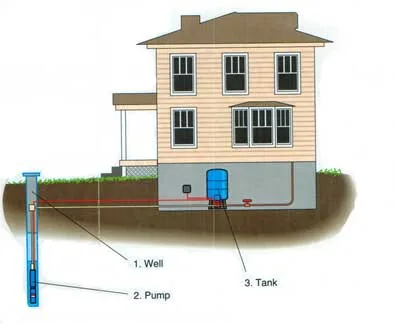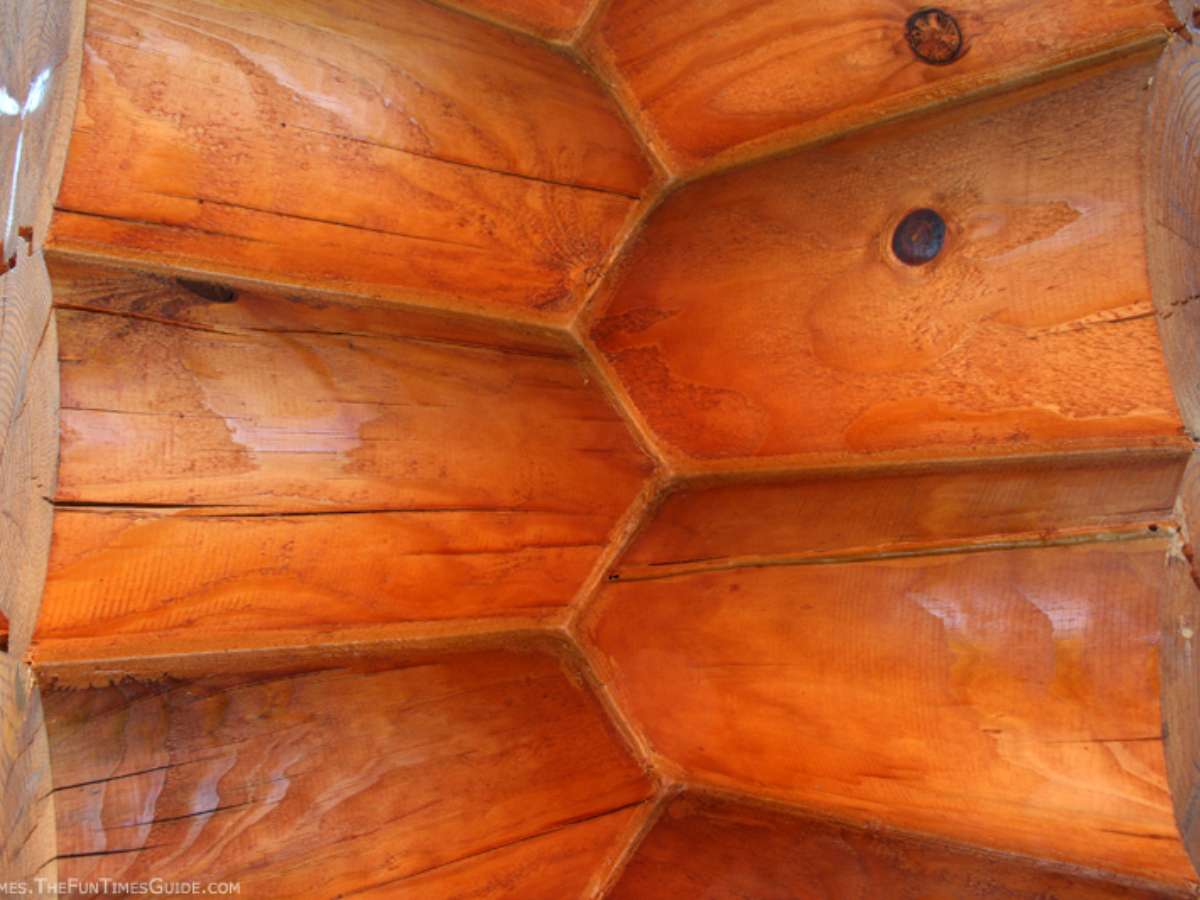We will have to dig a well at our property, so we turned to Watson Company for answers to our questions about wells.
Here’s what we’ve learned… (lots of fun facts about digging a well and water usage for all to enjoy here).

diagram via Watson Company
Our Proposed Well
Soon after we bought the property, we did some homework on wells.
We wanted to be somewhat educated about the process of digging a well before it came time to actually dig our well.
Using our neighbor’s well as an example, we learned the following:
- At 63 feet, they hit water for the first time.
- At 75 feet, they hit a well that would produce 1-1/2 gallons of water a minute.
- At 255 feet, they hit a well that would produce 2-1/2 gallons of water a minute.
- At 285 feet, they hit a well that would produce 4 gallons of water a minute. That’s where they stopped and dug their well.
We’re estimating that our well digging experience will be similar to our neighbor’s.
How Much Does It Cost To Dig A Well?
Based on the need to drill down to 285 feet, the folks at Watson Company tell us to expect something like this:
- $13/foot for drilling
- $12.50/foot of casing required
- $75 fee to the state of Tennessee
- $100 fee to prepare the well head
- $2,000 for the pump and piping
- 50 feet of ditch is included in the price; there will be a charge if more than that is needed
Based on this, we’re estimating about $7,000 to dig our well. (This includes a holding tank that will enable us to get more than 4 gallons a minute.)
Here’s another estimate on how much it costs to dig a well.
About The Watson Well & Water Company
We are confident in our decision to go with Watson Company when it comes time to dig our well.
Loyd and JoLinda Watson founded Watson Company, Inc. in 1975. The company specializes in water well drilling, pump sales, installation and repair service, water filtration systems, geothermal drilling, loop installation, and septic systems.
~ Source
Loyd is a Master Ground Water Contractor. With this distinction comes accreditation by the National Ground Water Association, as a contractor which has successfully passed testing on each level of expertise that is acknowledged by the Association.
He has also been the president of the Tennessee Water Well Association for the past several years.
Little-Known Facts About Wells & Water Usage
With a storage system, a well that produces as little as a gallon or less per minute can be sufficient to furnish a household with adequate water. A six inch diameter well will store a gallon and a half of water per foot of well depth. If for instance you have a well with a depth of 300 feet and the water is at the 50 foot level in the well, you already have 375 gallons of water stored in the well. When properly designed with timers and shut off devices, a low producing well can and will take care of a home. There are 1440 minutes in a day; a well that produces a gallon per minute will then produce 1440 gallons per day that can be pumped into and stored in a storage tank. A family of four uses approximately 300 to 400 gallons per day, this amounts to approximately 35% of the total well yield.”
~ Source
The actual well size in Middle Tennessee is usually 6 inches in diameter.
Source: Watson Water Company
All wells in Tennessee must be cased into bedrock, at least 5 feet but no less that 19 feet.
Source: Watson Water Company
A rule of thumb is to allow 65 to 85 gallons of water per person per day. You need to take into account for peak periods of use such as mornings and evenings, extra guests and outside water use such as irrigation and farm use.
Source: Watson Water Company
5 to 10 gallons per minute of flow rate is the average for domestic use in Tennessee.
Source: Watson Water Company
2 to 3 gallons of water a minute equals about 5,000 gallons per day.
Source: Watson Water Company
Most of the water used in the home is used in the bathroom. Because a lot of warm and hot water is used, a lot of energy is used as well.
Source: University of Florida
The shower accounts for approximately 20% of indoor water use, and 50% to 40% of hot water use. Studies have shown that most people use 4 to 5 gallons of water a minute when they shower. Some of the older showerheads can flow at a higher rate of up to 8 gallons per minute.
Source: University of Florida
A family of four can spend over $400 for showering annually for water, wastewater, and the electricity to heat the water in their bathrooms ($58 with a gas water heater) — or they can spend as little as $243 using a low-flow showerhead to get the same results ($32 if gas water heater).
Source: University of Florida
Low-flow showerheads are designed to maintain a refreshing spray and operate within a range of 1.5 to 2.5 gallons of water for each minute. Low flow showerheads increases the shower force by increasing the velocity while dispersing the water into many tiny droplets that still give you a good shower with less water.
Source: University of Florida
Older faucets typically use 7 gallons per minute and new faucets use about 2.5 gal
lons per minute. These kitchen and bathroom faucets can be replaced with low flow faucet aerators, which are available in sizes ranging from .5 to 2.5 gallon per minute. These aerators mix air with the water to make an effective spray pattern. By replacing old aerators with new more efficient one you can save a lot of water.
Source: University of Florida
If you have an older toilet, you could be using up to 40% of you indoor water use on toilet flushing. Older toilets can use any where from 3.5 to 7 gallons per flush.New Ultra Low Flow Toilets or ULFT are a proven technology and only use 1.6 gallons per flush.
Source: University of Florida
A typical household does nearly 400 loads of laundry a year, using about 40 gallons per full load with a conventional washer.In contrast new horizontal-axis washing machines only use 20 – 25 gallons per load. These new washing machine are different in that instead of filling the entire tub with water and agitating the clothes covered with water, the new, water efficient machines are front loading and fill the tub only partially full and rotate the clothes through the water. These water efficient clothes washer not only use 1/3 the amount of water as conventional washers but they also half of the energy. Therefore, you can save money by using less water, less detergent, and less energy.
Source: University of Florida
RELATED:




